Get practical tips for hiking the 110 km National Park Trail through Belgium’s Hoge Kempen National Park, offering scenic views and peaceful nature.
What is the National Park Trail?
When I was invited to hike the National Park Trail, it truly felt like a gift. As you may know, hiking long-distance trails is my passion, and this was my first hike in Belgium, which made it even more exciting.
But what exactly is the National Park Trail? It’s a 110-kilometer (68-mile) long-distance hike through Hoge Kempen National Park in Belgian Limburg. This vast nature park offers everything you could wish for: heathland, picturesque fens, wooden plank paths, dunes, and lush green forests. What makes it even more special is that you won’t encounter much construction or traffic along the trail, allowing you to fully immerse yourself in nature.
In fact, the National Park Trail is so highly regarded that it was awarded the prestigious Leading Quality Label by the European Hiking Federation in December 2022, placing it among the best long-distance hikes in Europe.
The trail consists of five connected stages, each showcasing something unique about Hoge Kempen National Park. It’s incredibly easy to walk, not only because of the well-marked routes and practical starting and ending points (each located at an entrance gate with facilities like large parking lots), but also because of the clear signage. You can’t get lost, and you won’t need to check your phone to see if you’re on the right path. This makes it a perfect adventure for nature lovers.
In this article, I’ll share my experience and provide practical tips if you want to hike the National Park Trail yourself.
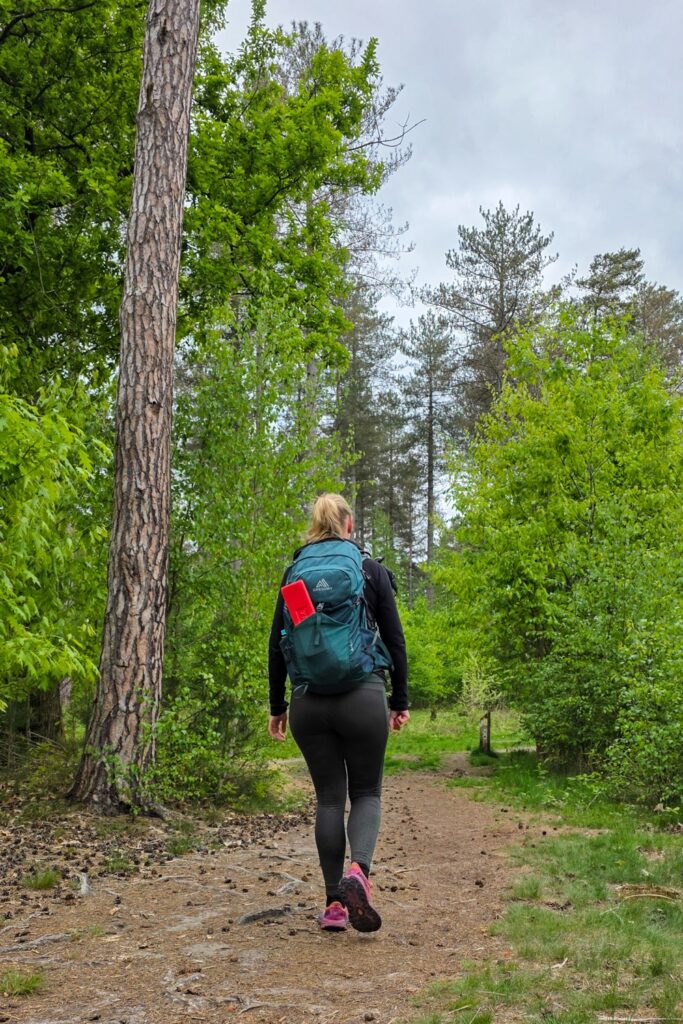
National Park Trail Stages
So there are five stages that make up the entire National Park Trail. Here’s what to expect from the stages.
Stage 1: Kattevennen (Genk) – Pietersheim (Lanaken)
- Kilometers: 23.8 (14.8 miles)
The trail begins at entrance gate Kattevennen, where you can almost immediately climb the impressive Lightning Staircase. I really enjoyed this, as from the viewpoint you get a stunning view of the sea of green that you’ll be hiking through over the next few days.
The first stage takes you mainly through vast forests, with occasional clearings and a small lake (which, unfortunately, you’re not allowed to swim in). I noticed there were benches in many scenic spots, perfect for a short break. Every now and then, you’ll come across a plank path, like the one halfway through a marshy area that I found particularly beautiful.
The last part of the stage is quite adventurous: a narrow path along a stream in a relatively dark forest. The stage ends at a petting zoo, where you can take a break and use the restroom.
- Where to stay: Pietersheim Castle Maastricht – Lanaken – You can end your first stage in style with a night in a castle. The castle is beautifully set in green surroundings, offering a peaceful atmosphere to rest after your hike.
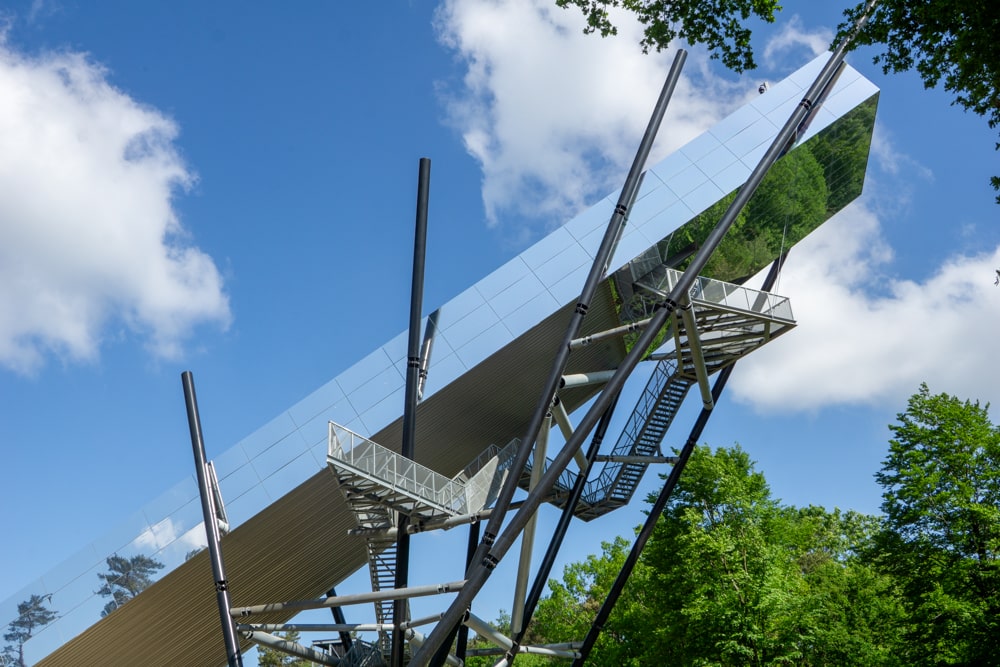
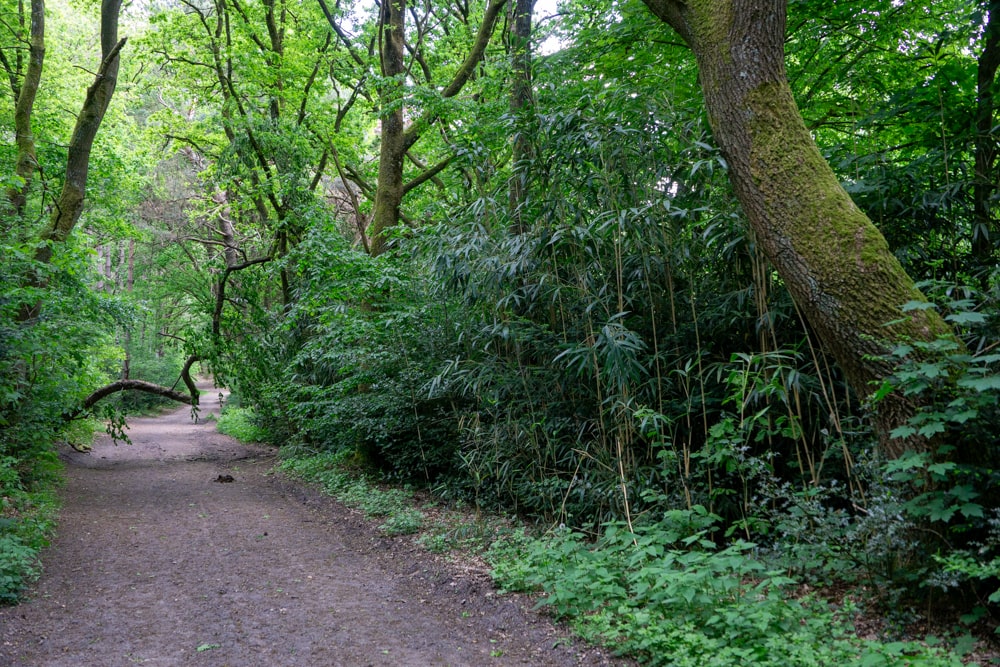
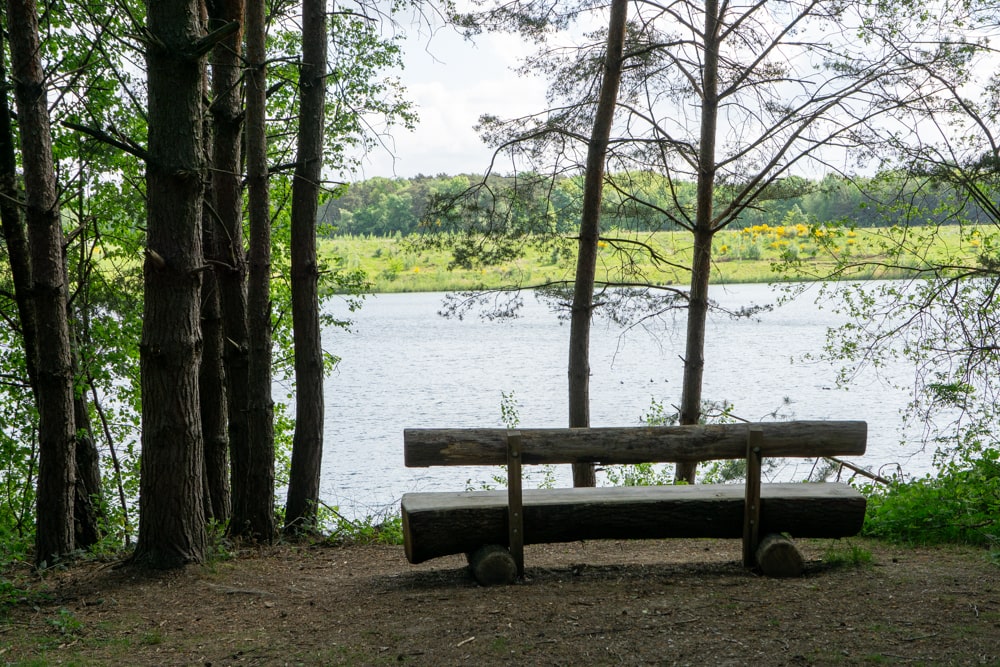
Stage 2: Pietersheim (Lanaken) – Terhills (Maasmechelen)
- Kilometers: 24.8 (15.4 miles)
The second stage begins with plenty of forest, but I quickly notice there are more open spaces compared to the first stage. Again, there are many lovely decking paths, and it’s a pleasure to walk through the varied nature. The trail runs from south to north along the edge of the Kempens Plateau, which means there are a few climbs to tackle as well.
The second half of the stage opens up much more, with several moors and hills. It reminds me a bit of Drenthe, especially when I walk across the Mechelse Heide. Along the way, I spot large craters, remnants of a German training ground from World War I.
The stage ends at Terhills, where I walk along a beautiful lake. The variety in the landscape makes this stage both diverse and enjoyable.
- Where to stay: Terhills Hotel – Located right next to the entrance of the National Park, Terhills Hotel is the perfect place to unwind after this stage. You won’t have to walk far and can immediately enjoy a luxurious hotel room.
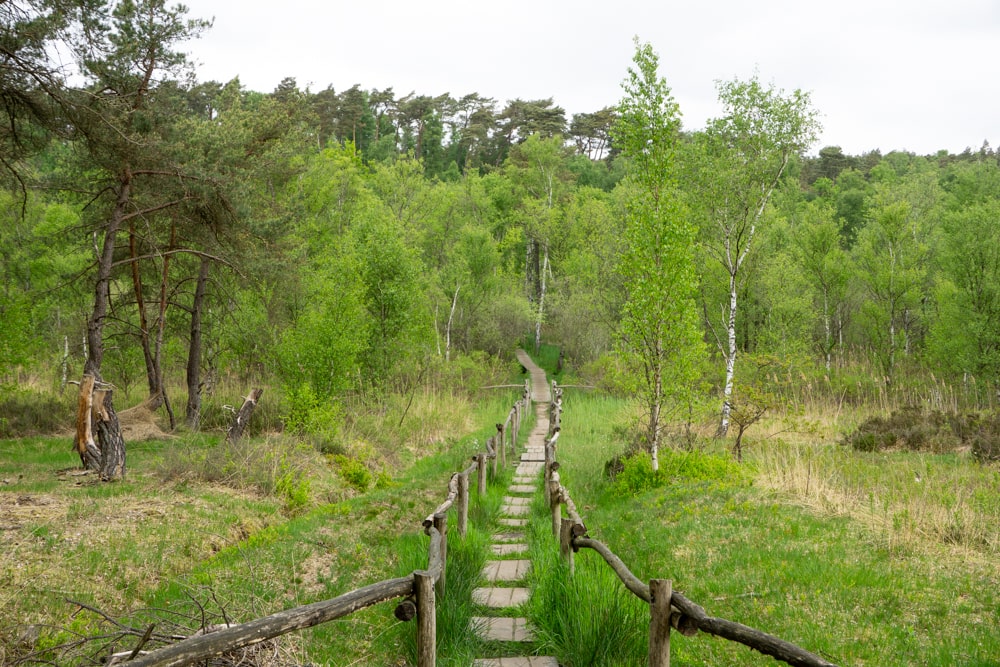
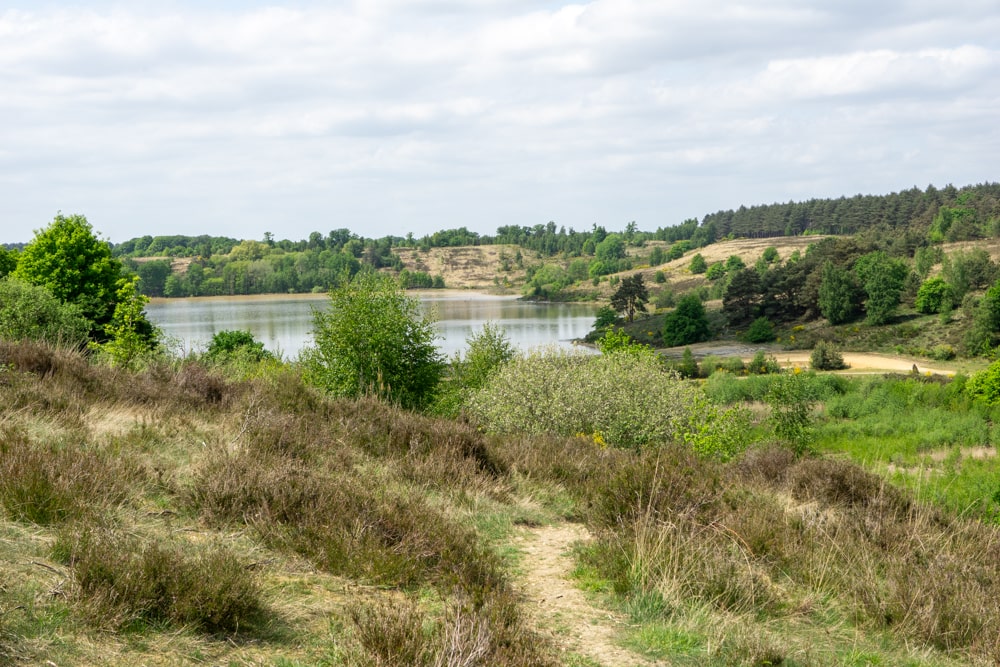
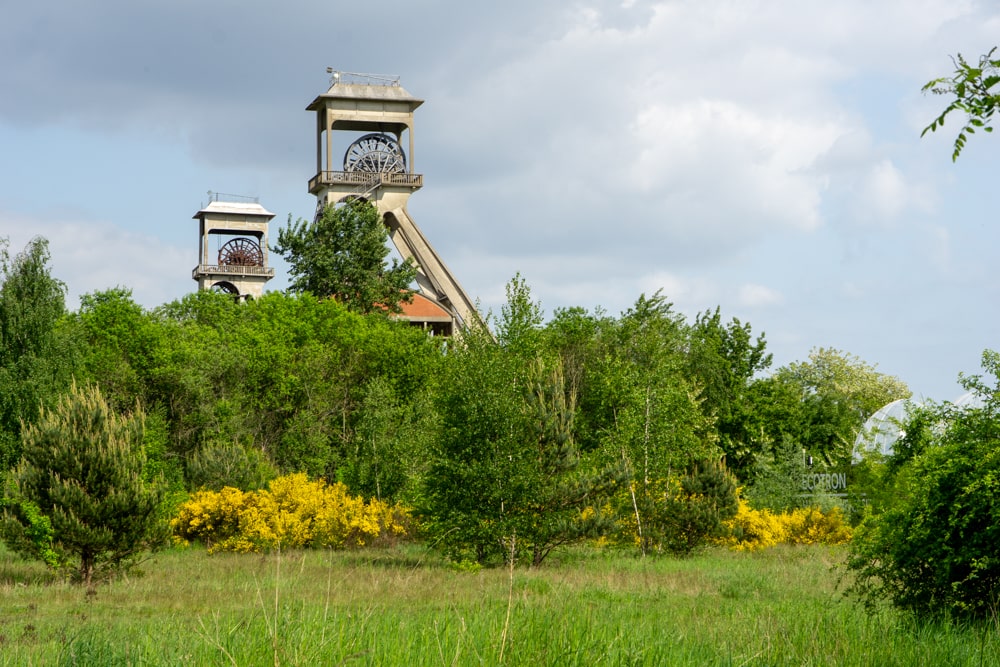
Stage 3: Terhills (Maasmechelen) – Duinengordel (Opoeteren)
- Kilometers: 22.6 (14 miles)
Terhills is one of the most popular entrances to the park, so you won’t be the only one here. The stage begins with quite the workout: the ascent of three hills, each steeper than the last. It’s definitely a challenge, but the views make it worth it. After the first hill, you’ll experience another highlight: walking on a path through the water, one of the park’s most famous spots. I found it very special to walk across this!
After the hills, the landscape flattens out and you’ll spend most of the stage walking through forests. I noticed it was much quieter here than at the hills of Terhills. I was mostly alone, occasionally passing a mountain biker.
The final part is another beautiful stretch; you walk through the Bosbeek Valley on a boardwalk. The stage ends in Opoeteren, a lovely village where you can relax with a drink on the terrace or enjoy a delicious ice cream from Oeters IJs.
- Where to stay: Vacation Volmolen B&B – A charming bed and breakfast with a historic water mill, located right on the National Park Trail, just before Opoeteren. A great place to rest after this stage.
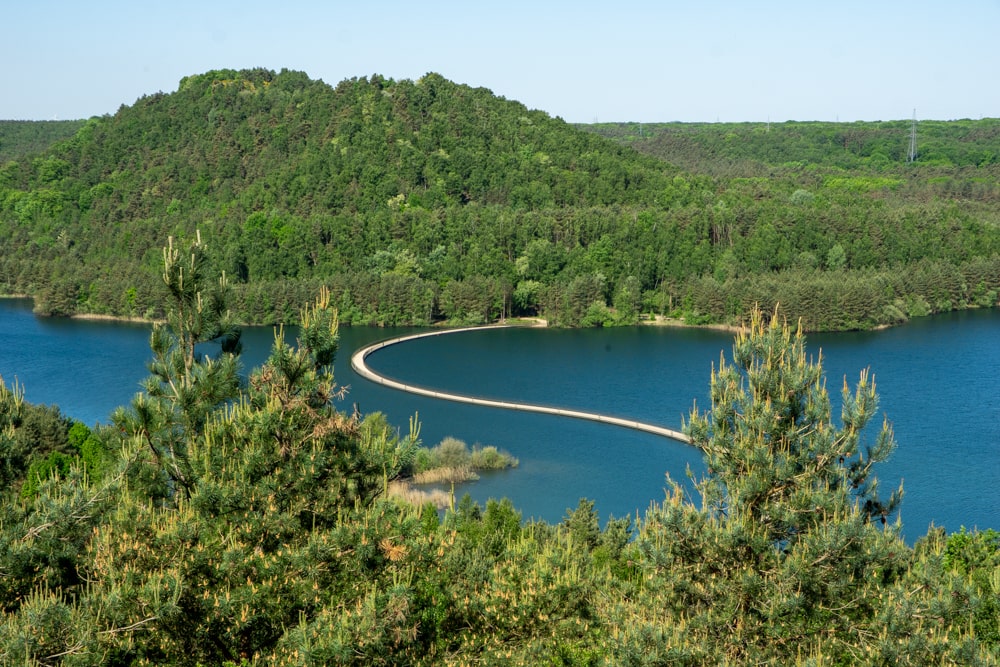
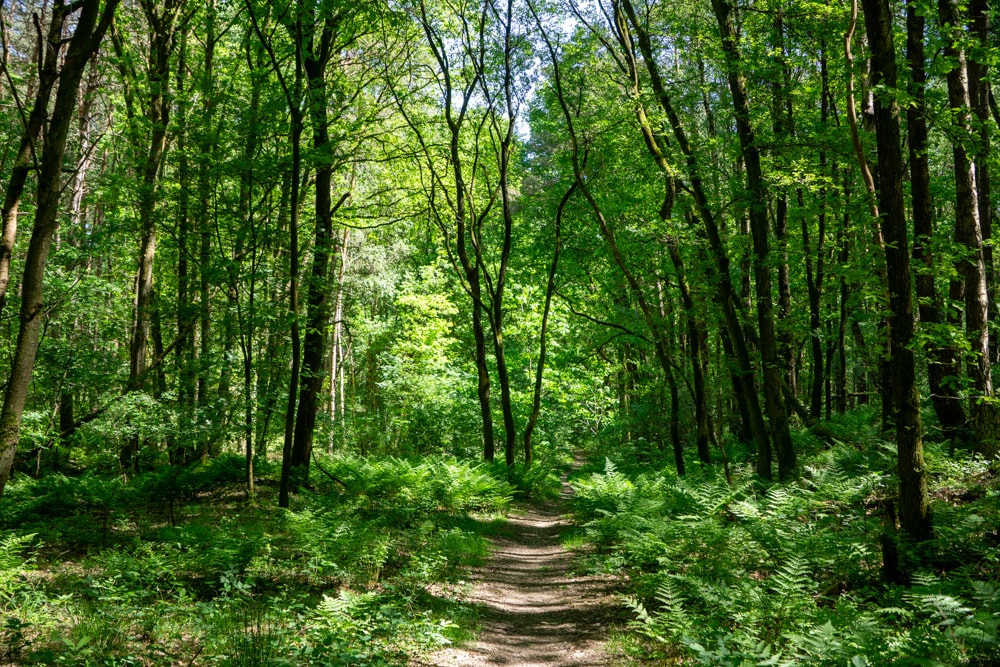
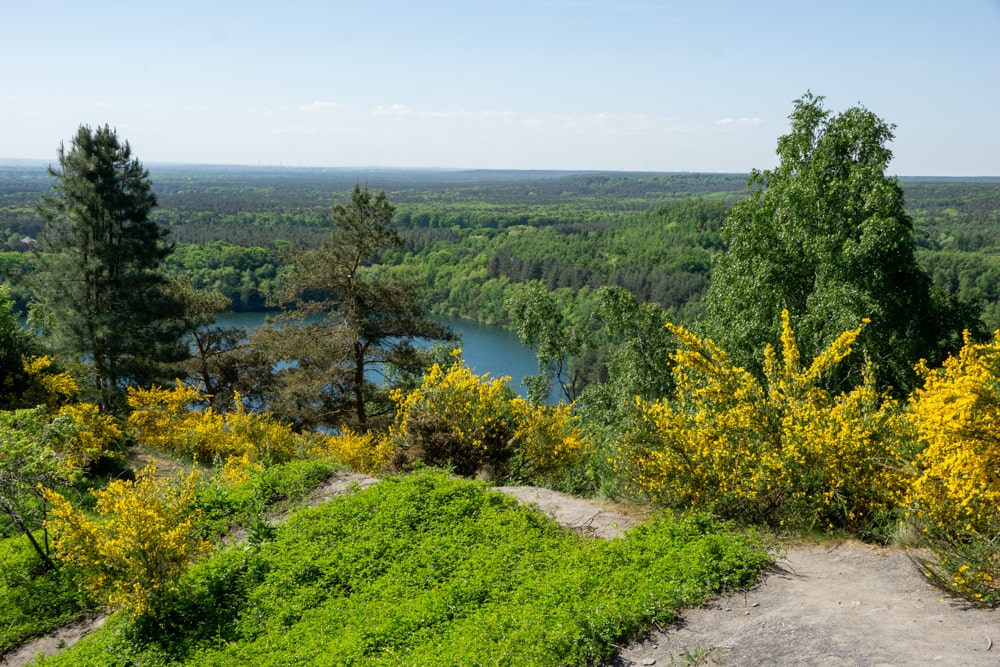
Stage 4: Duinengordel (Opoeteren) – Thorpark (Genk)
- Kilometers: 27 (16.8 miles)
This is the longest stage, and personally, I thought it was one of the most beautiful of the entire National Park Trail. After a few kilometers through farmland, you enter the forest again, passing several sand dunes along the way. The Oudsberg is the highest point of the Kempen, making this part of the stage incredibly beautiful!
After several dunes and moors, you walk a lot through the forest, passing numerous small fens. I noticed how peaceful it was—at one point, I walked for hours without encountering anyone. It was amazing to be so immersed in nature. The stage ends with a significant climb to the top of the terril at Thorpark. The view from here is truly worth it and provides a perfect end to the trail.
- Where to stay: B&B La Miniera – A cozy bed and breakfast just a few minutes’ walk from the National Park Trail. There are many great restaurants nearby, making it a perfect spot to relax after the stage.
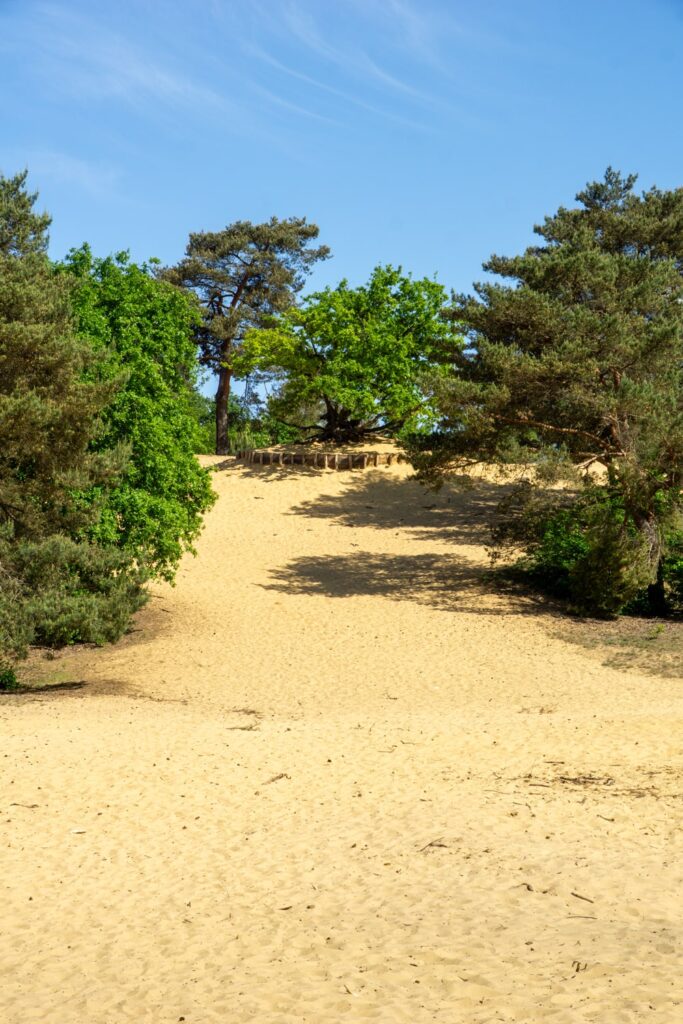
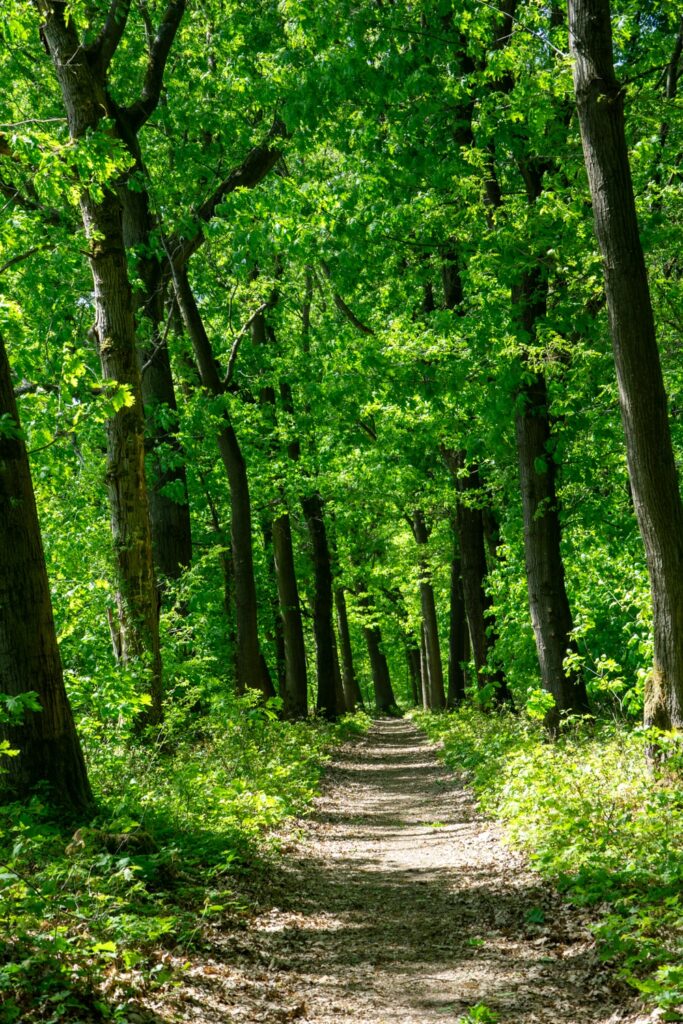
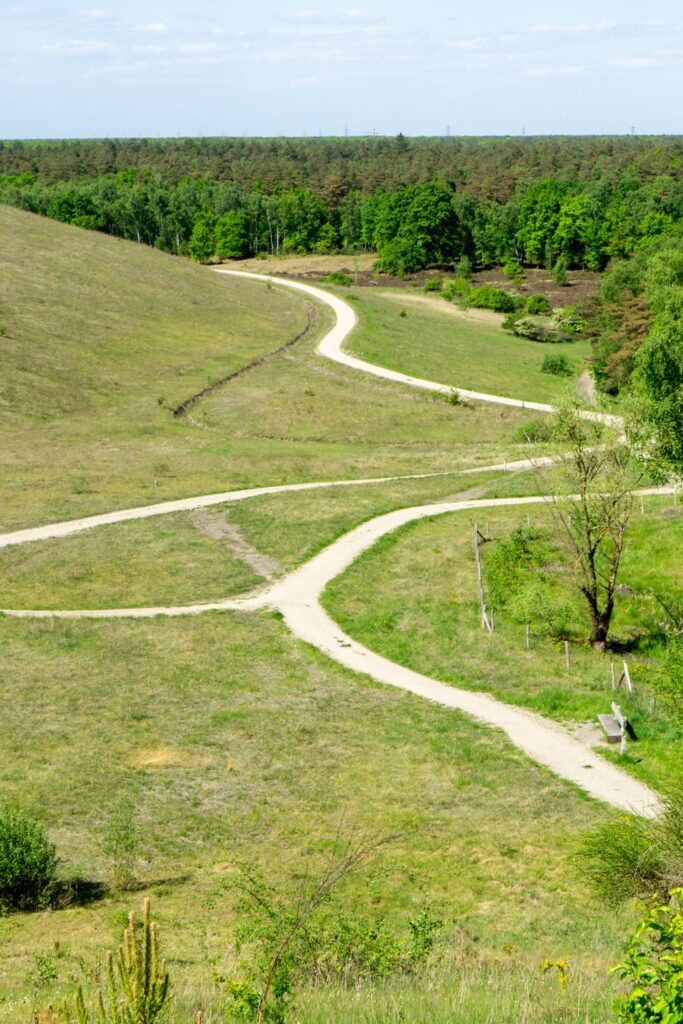
Stage 5: Thorpark (Genk) – Kattevennen (Genk)
- Kilometers: 11.2 (7 miles)
This short stage is the perfect way to finish the trail or to ease into it if you want to start later in the day. I walked this as my first stage since I didn’t arrive until the afternoon and wanted to do a shorter hike. It starts at the landscaped Thorpark, where you quickly encounter a few decking paths. It immediately feels peaceful and natural.
After that, you walk mostly through the woods. To my great joy, I came across the famous Camino marker here. A moment of recognition, as my previous long-distance walk was the Camino Francés. It’s my dream to one day walk the Camino from Groningen, and I’ll probably walk past here again then.
The route crosses the highway via Flanders’ first “Eco-recreaduct.” The left side is for animals, the middle for walkers, and the right for cyclists. Quite special! After that, you walk through the grounds of Golf Club Spiegelven before finally reaching Kattevennen, where the National Park Trail ends.
- Where to stay: B&B The Gemstone – This cozy bed and breakfast is located in Wiemesmeer, about 2 kilometers from the trail. A great place to unwind and relax after completing your hiking adventure.
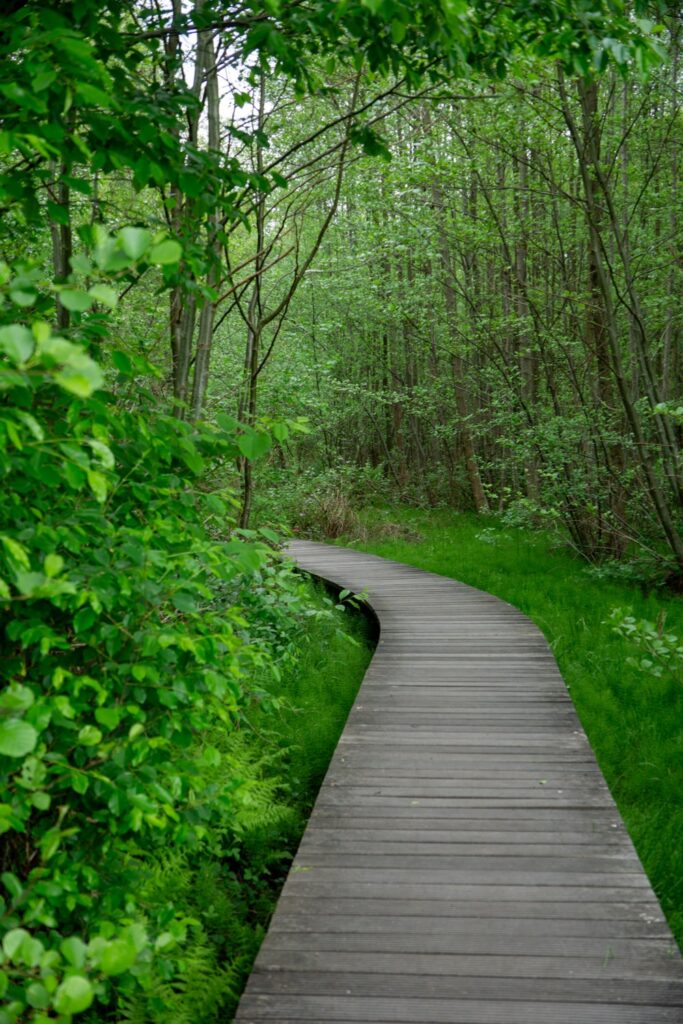
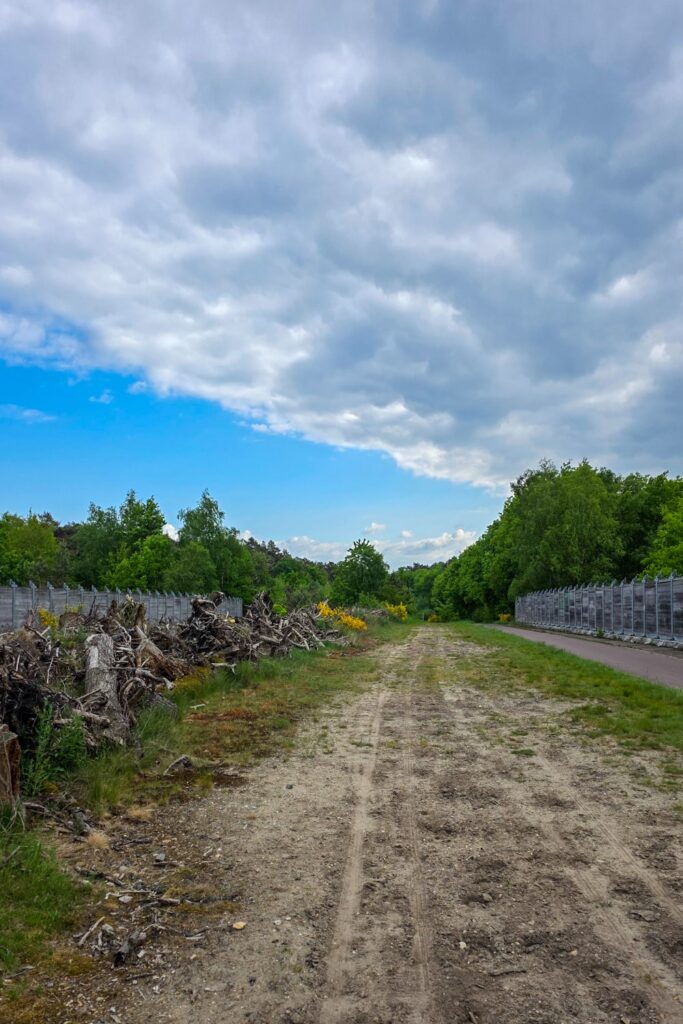
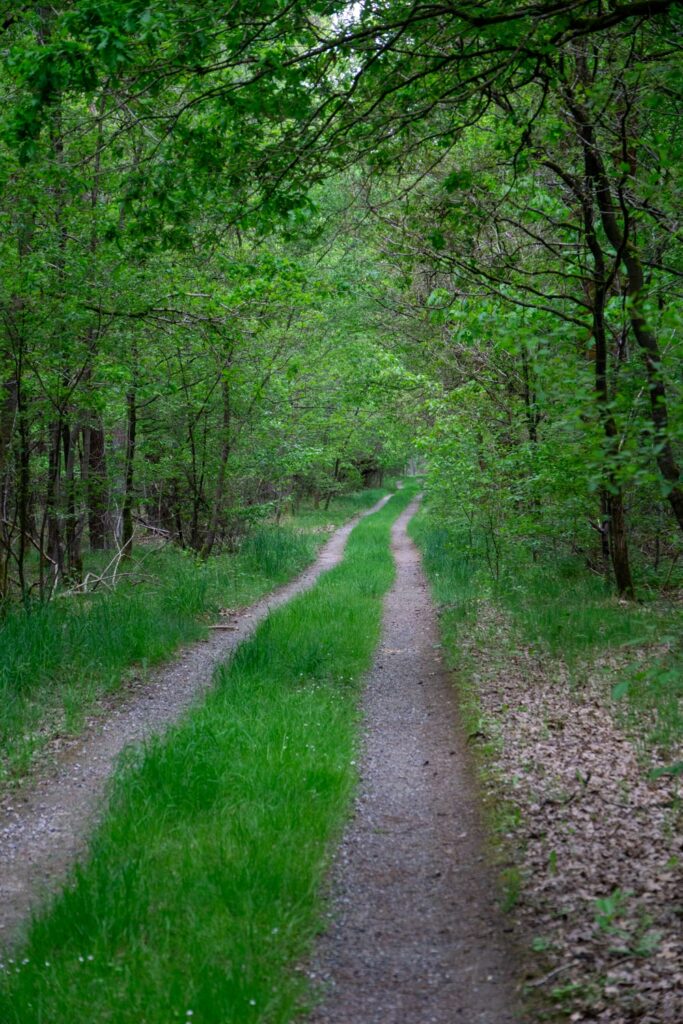
Of course, you don’t have to walk the stages in order, and you can shorten or lengthen them to suit your needs. They’re a great guide, and I personally found the length of each stage perfect.
Variants
On the National Park Hoge Kempen website, you can find other (shorter) variants that allow you to explore different parts of the park and connect different stages. For example, you can hike from Terhills to Thorpark. Check out the website for various options and additional routes.
Practical information
What do you need to know before you hike the National Park Trail? Here are some practical tips and advice for your visit to Hoge Kempen National Park.
How do you get to the starting points?
The five entrance gates of the National Park Trail are easily accessible, by car and usually by public transportation. At each gate, you’ll find parking, information signs, and sometimes catering facilities and restrooms.
- Kattevennen (Genk): Easily accessible by car, with a large parking lot. Unfortunately, there’s no nearby bus stop, but the Hoge Kempen website provides a special 4-kilometer route from Genk station to Kattevennen.
- Pietersheim (Lanaken): The starting point is opposite the Children’s Farm (which also has public toilets). There’s a large parking lot, and the entrance is also easily accessible by bus, with several lines stopping about 15 minutes’ walk from the starting point of stage 2.
- Terhills (Maasmechelen): This entrance has a dedicated visitor center with catering facilities and public restrooms. It’s easily accessible by both car and public transportation. The visitor center is located next to Maasmechelen Village, a popular shopping destination.
- Opoeteren (Maaseik): The starting point of stage 4 is in the center of the village, and you can easily park at the church. Several buses also stop nearby.
- Thorpark (Genk): Easily accessible by both car and public transportation, with plenty of parking (but paid).
For all options in terms of routes and public transportation, check Google Maps or De Lijn. Most of the parking I saw at the starting and ending points was free (except at Thorpark).
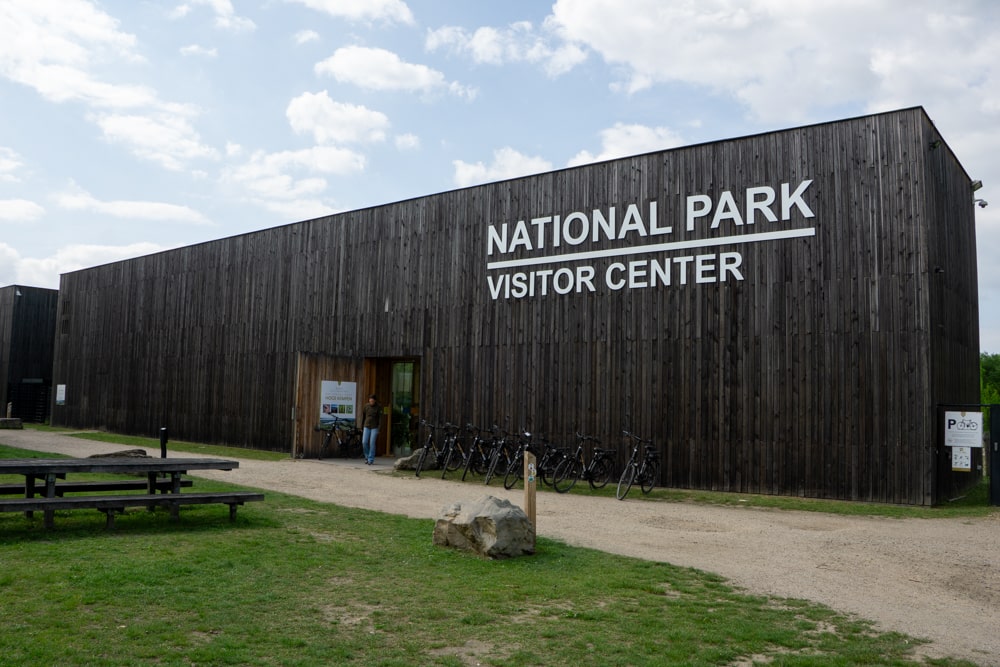
How to navigate
As I mentioned in the introduction, navigating this trail is incredibly easy. There are signs everywhere with the logo of Hoge Kempen National Park (a paw print made of stones) and the text “National Park Trail.” The trail is clearly marked in both directions.
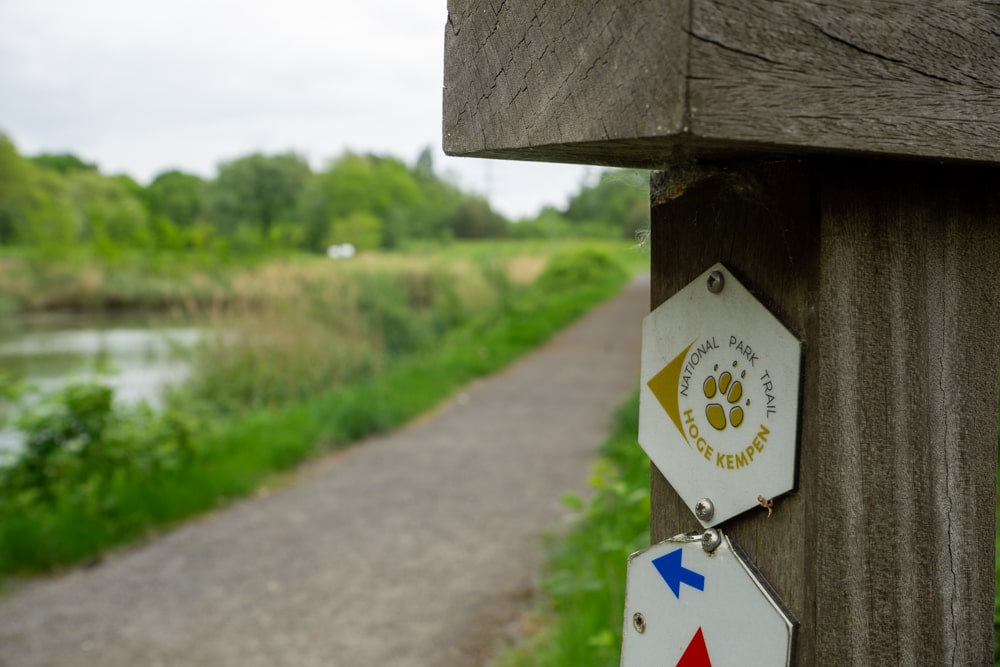
Of course, you can also download GPX files from the official website, but to be honest, I didn’t need my phone during the hike. Now that’s what I call a great trail experience!
Best time of year to hike the trail
The trail can be hiked year-round, but the best time is from April to October. In spring and summer, the nature is at its finest, with lush green forests and blooming flowers. In autumn, the changing colors provide a stunning backdrop for your hike, which is undoubtedly a special experience.
I hiked the National Park Trail in early May, and for me, it was the perfect time. It wasn’t crowded at all, and the temperature was perfect for hiking.
Hospitality and facilities
What struck me most about the National Park Trail was that it runs almost entirely through nature. You’ll hardly encounter any towns or villages, so you won’t come across many pubs or restaurants. However, when you get close to a village or town, there is usually a café where you can stop.
But if you’d prefer not to venture too far from the trail, it’s a good idea to bring your own food and drinks. There are plenty of benches with great views along the way where you can take a break.
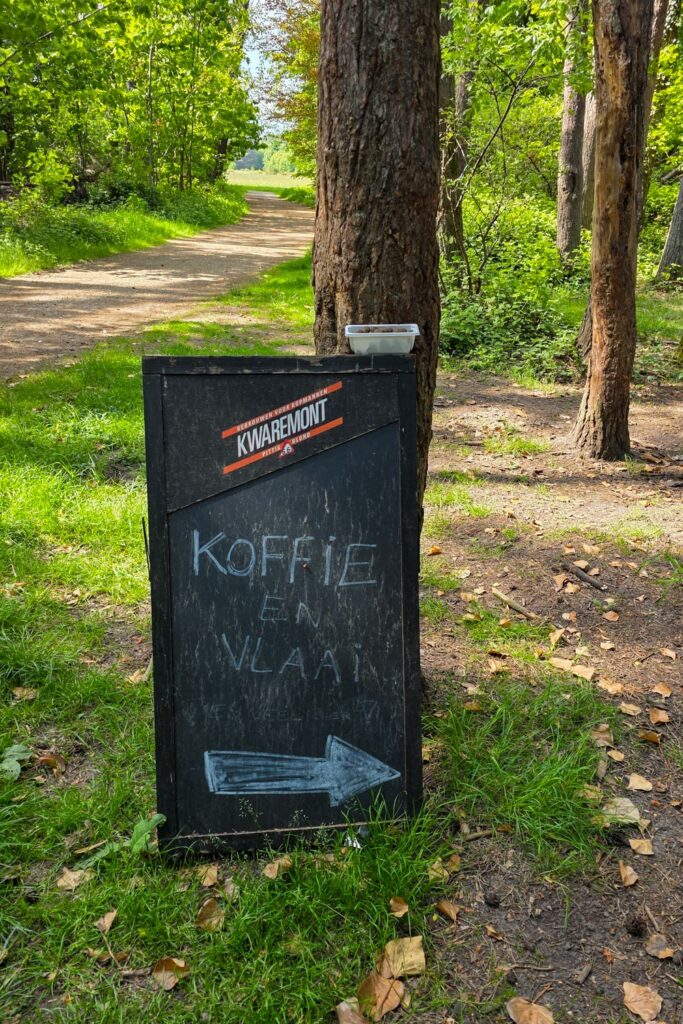
What to bring
What’s essential to bring when hiking the National Park Trail?
- Good hiking shoes – You don’t need high mountain boots to walk the National Park Trail (unless you prefer them), but shoes with a solid tread are recommended. I hiked with trail runners (Hoka Speedgoat) and they were incredibly comfortable, I’ve never had a blister.
- Water and snacks – There are few places to refill your water bottle or buy food, so always bring a supply. I carried a 1-liter bottle in early May, which was enough most days. You can occasionally refill your bottle at the start or end of the route.
- Clothing – Wear layers so you can adjust to the weather easily.
- First aid kit – t’s always a good idea to carry a few band-aids, painkillers, tweezers, or tick forceps, just in case.
- Sunscreen & insect repellent – Sunscreen is essential, even when walking mostly through forests. You’ll often pass through wetland areas, where mosquitoes are especially prevalent during the summer months.
- A trash bag – Especially in the forest, where you won’t find any trash bins, take your rubbish with you until you find one. And yes, that includes your used tissues.
For more tips, check out the article What’s in my pack? Day hike packing list.
Accomodation
For each stage, I’ve already shared a great accommodation tip, but of course, you can stay at other places too. I usually check Booking.com to explore options, where you can easily see which accommodations are close to the trail on the map.
You can also book a special hiking package, camp, or stay in hiker’s cabins.
Hiking Package
Did you know that you can walk (part of) the National Park Trail very comfortably from a B&B? I stayed at B&B Haerlekijn in Meeswijk (Maasmechelen). It’s a lovely and quiet spot with spacious rooms and a large green garden to relax in.
Every morning, I enjoyed a delicious breakfast and was even allowed to take some with me as a packed lunch. Transportation to the starting point of your hike was also included, and the owners really go out of their way to pamper you. It’s perfect if you want to hike and relax at the same time!
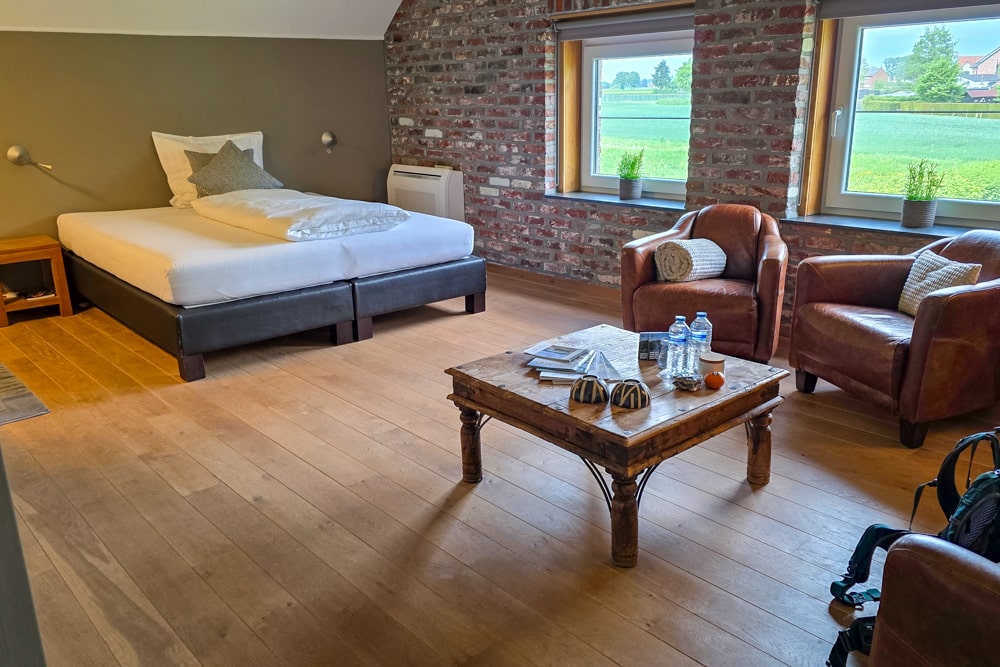
Camping & cabins
If you’re on a budget or want to make the National Park Trail even more adventurous, there are several camping options and hiker’s cabins along the trail.
- Check out options for campsites and cabins along the National Park Trail. (Unfortunately, this page is only in Dutch, use a translater for translation).
Now you know everything you need to get started on the National Park Trail in Hoge Kempen National Park. As far as I’m concerned, this trail comes highly recommended. It’s a fantastic way to immerse yourself in the beautiful nature of Belgian Limburg for five days!
Book your trip to Belgium
Are you excited about hiking the National Park Trail and planning your trip to Belgium? Here are some useful links to help you get started:
✈️ Flights – Compare prices and book your flight via Skyscanner, a great tool to find the best deals on flights to Brussels, Charleroi or nearby airports in the Netherlands and Germany.
🚆 Trains – Traveling from the Netherlands or France? Book your train tickets via Rail Europe for comfortable and affordable rail travel.
🚗 Rental cars – Want to explore more of the country? Check out DiscoverCars or Rentalcars.com for a wide selection of rental options with clear conditions and good insurance.
🧭 Guided tours & activities – Prefer to join a tour or book tickets in advance? Browse outdoor tours, walking trips and cultural experiences on GetYourGuide or Viator.
Read more about Belgium and hiking in the Benelux
Looking for more hiking inspiration or tips for a vacation in Belgium? Here are some great books you can check out:
Lonely Planet Belgium & Luxembourg
I hike a lot myself and have had the opportunity to explore many (long-distance) hiking trails in the Benelux, a region that includes Belgium, the Netherlands, and Luxembourg. You might also enjoy these articles:
- Mullerthal Trail Route 2: an amazing hiking adventure in Luxembourg
- Hiking the Pieterpad trail in The Netherlands: the ultimate guide
- Hike the Minett Trail: discover the south of Luxembourg
And don’t forget to sign up for my newsletter for more hiking & travel inspiration and fun travel stories!
I hiked the National Park Trail at the invitation of Tourism Flanders and Visit Limburg. As always, all opinions are my own. Check this page for more information about collaborations. This article contains a few affiliate links. If you book or purchase something through one of these links, I may receive a small commission, at no extra cost to you. Check here for more information, and thank you for supporting this blog!

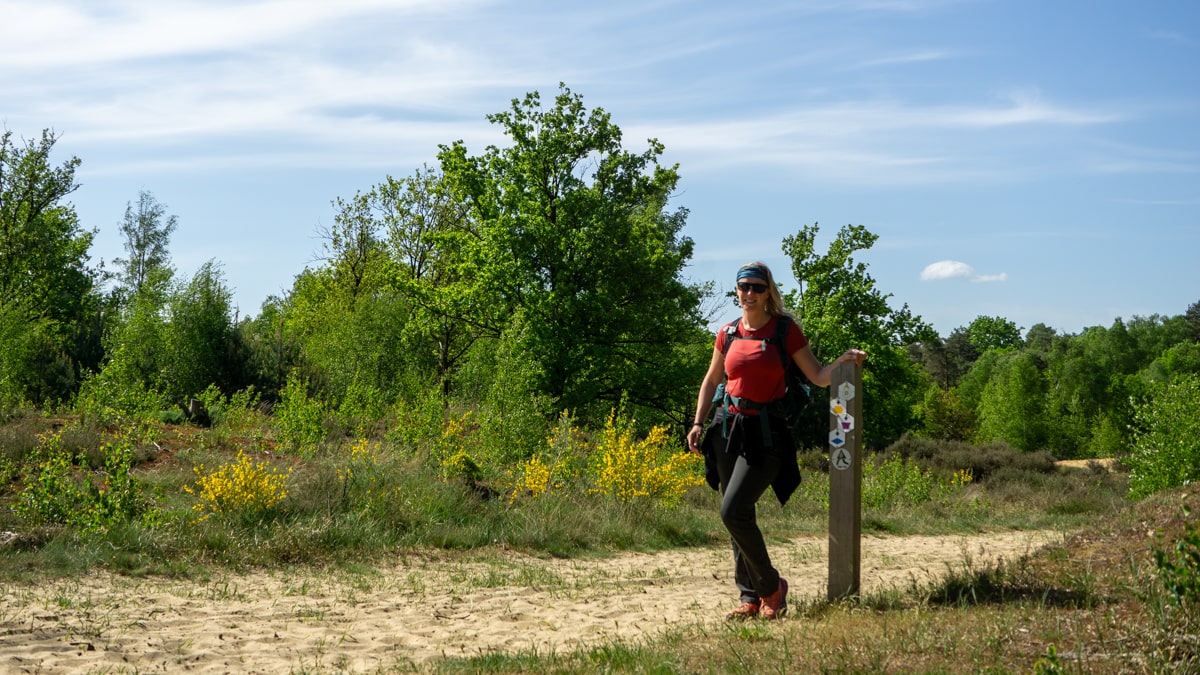
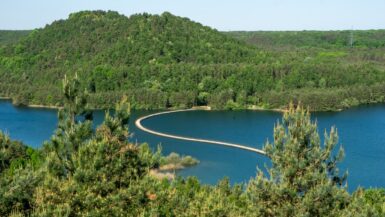
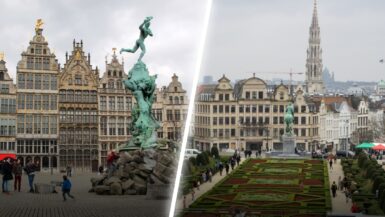
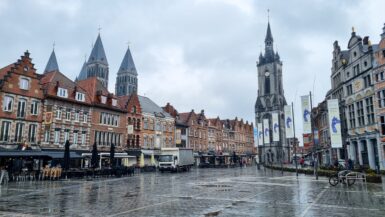
Leave a reply